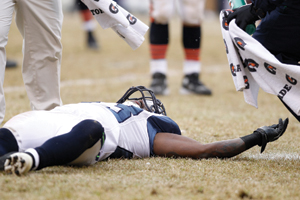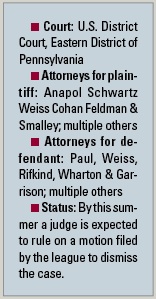With billions of dollars on the line, the lawsuit brought by thousands of retirees against the NFL for concussions is clearly the most-watched lawsuit in sports.
Hundreds of concussion cases brought by more than 4,200 NFL retirees are consolidated into a single lawsuit in U.S. District Court for the Eastern District of Pennsylvania, where a judge is mulling an NFL motion to dismiss the case.
When the concussion cases, alleging the NFL knew about the risks of concussions and hid them, began popping up in 2011, the court system consolidated the cases into a single class-action suit.
The first real action in the case was April 9 when U.S. District Judge Anita Brody heard arguments about whether the case should go forward or be dismissed. The NFL argues the claims are covered under past collective-bargaining agreements and do not belong in court, while the former players say those labor pacts did not envision the kind of trauma involved in the case.
For observers of the court, the players seemed to have a good day on April 9. First, even the
 |
| Photo by: Getty Images |
NFL’s own lawyer, Paul Clement, seemed to concede the flaws in the league’s case for the few hundred players who competed when there was no CBA (pre-1968 and between 1987 and 1993). Most feel at the very least that Brody will allow the claims of those players to proceed.
But the judge also focused on “the Kline decision,” a binding precedent in the Pennsylvania district. The Kline case involved an employer spying on employees. The employees sued and the employer countered that unionized employees could not sue their employer. The decision was that the employees could sue because the specific issue at hand was not in their CBA.
“A judge often asks questions about certain cases, whether he or she thinks the case governs or not,” said John Goldman, a lawyer with Herrick Feinstein. “But it sure seems that the judge thinks Kline applies, and mandates a denial of the league’s application to compel arbitration.”
All that would mean of course is the case gets appealed, and even Brody admitted that in other circuits there are conflicting decisions from Kline. That means the case has many more years to go, barring a quick settlement, and those potentially billions of dollars in damages are still far in the future.





